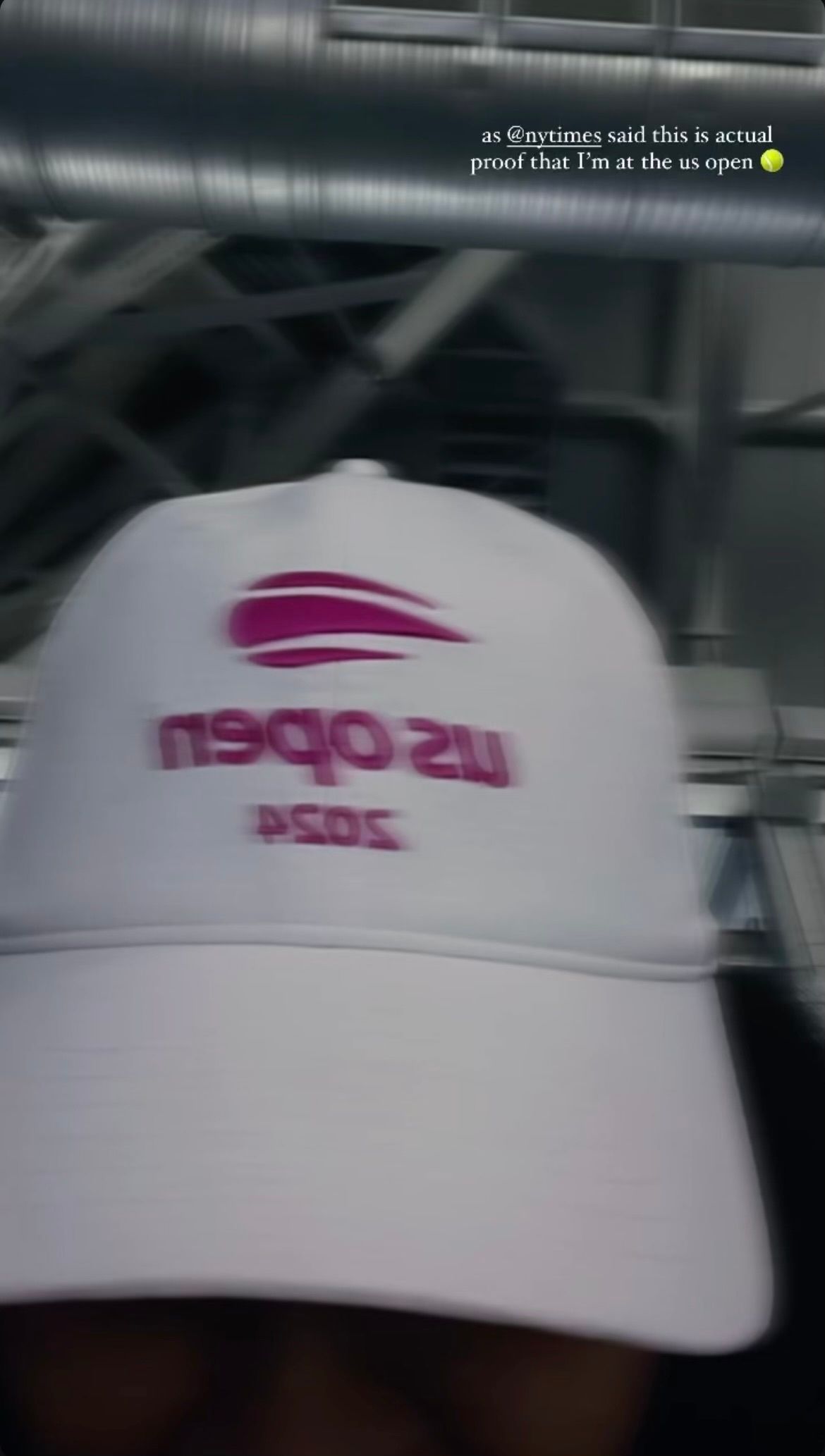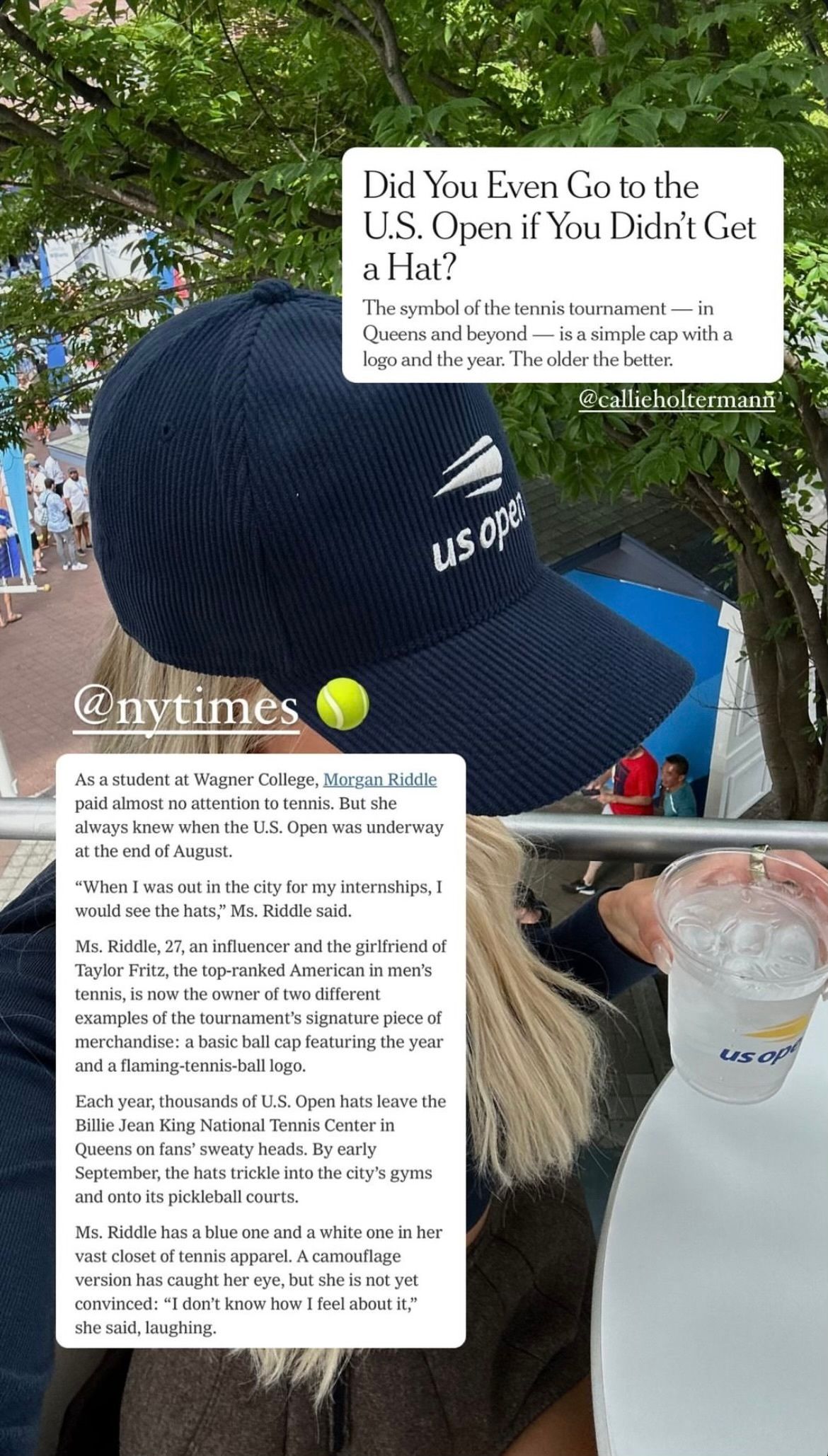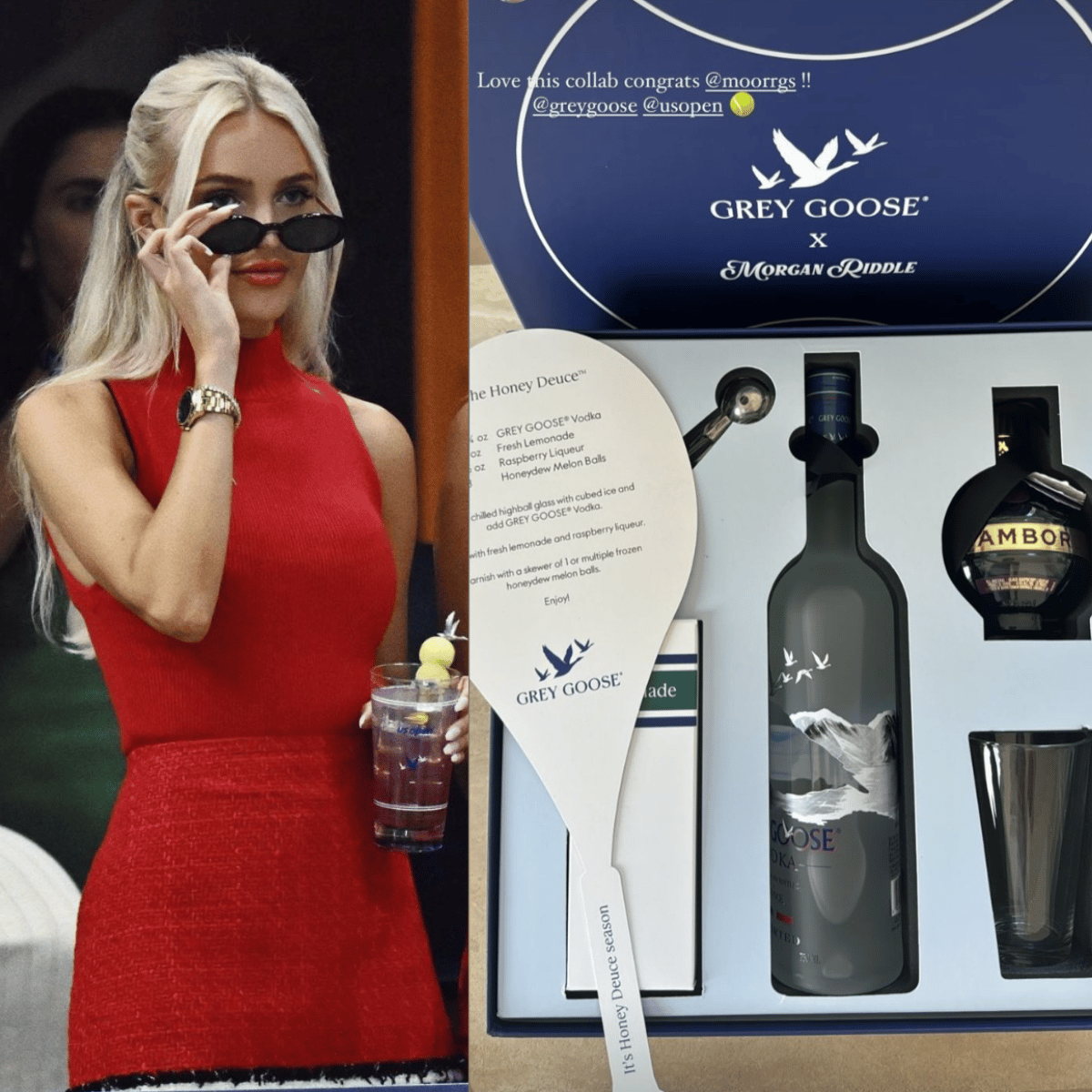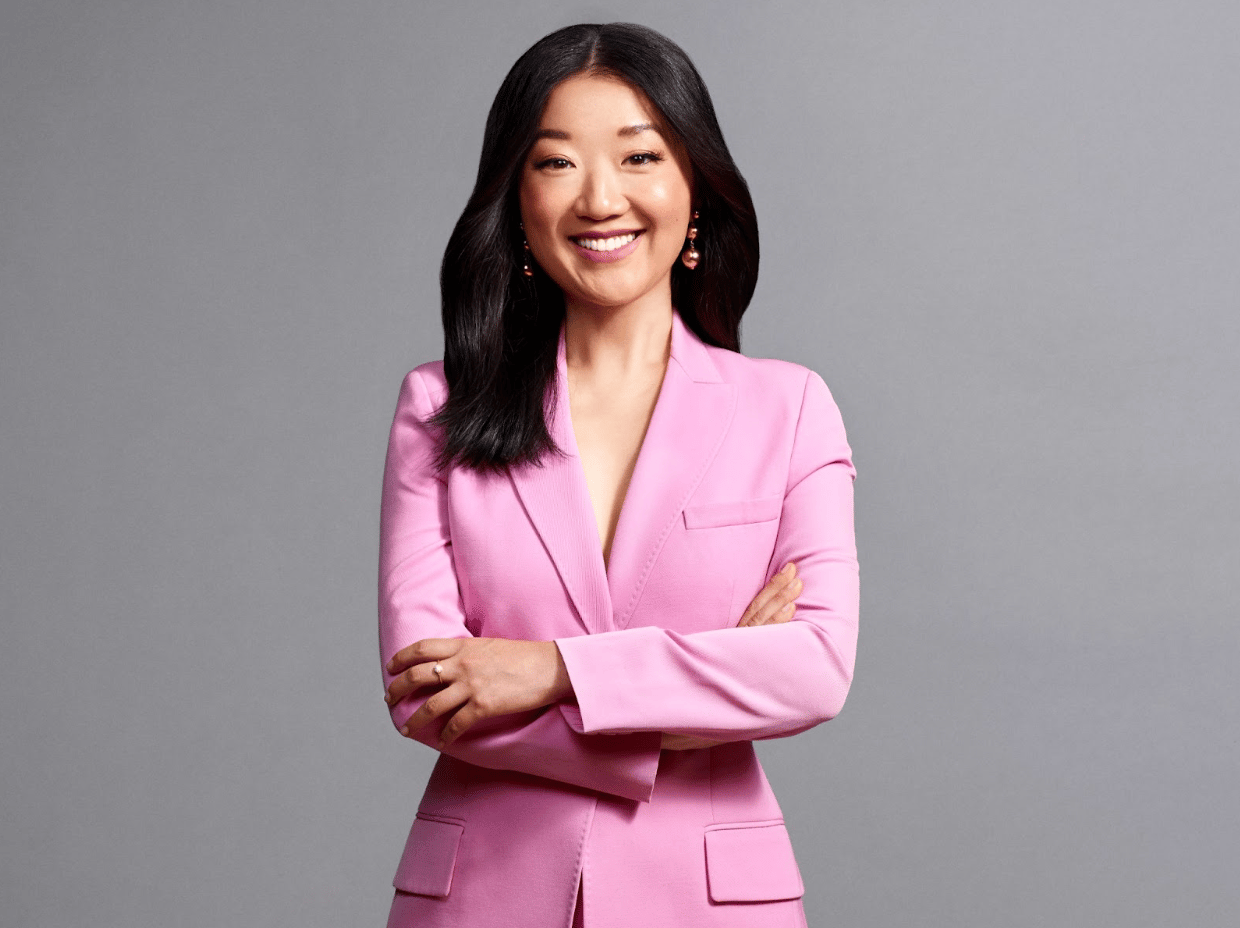- lazy girl capital
- Posts
- This Founder Raised More Than $115 Million to Make Fertility Care Accessible: Tammy Sun
This Founder Raised More Than $115 Million to Make Fertility Care Accessible: Tammy Sun
Grey Goose's $23 Signature US Open Cocktail is valued at $47M?!
@claaaarke bringing more of my IG story questions to tiktok 👀 i love answering these
There is way too much for me to recap from my weekend in NYC and at the celeb sports event of the year. A few things I’m giving myself permission to:
💌 only dating someone in the same socioeconomic class as me
🤓 identifying as cultural critic of all things feminist and anti-feminist (honestly anything that sparks as much discourse as the recent New Yorker cover)
🎙️ becoming a founder but there’s only one type of company I would run when I grow up….
🌎️ unfilter my filtered world. I need to read more books y’all, so I can become more curious and excited.
I give myself permission to constantly evolve so I can push the boundaries of my potential and surpass yesterday’s self.
I hope I don’t evolve too much cause it seems like Tony Goldwyn (sorry Fitz) is thriving at 64 with no substantive changes to his aura.
@usopen Respect the commitment to getting that shoutout off 😂 #francestiafoe #tonygoldwyn #usopen
 |  |
Didn’t have my Challengers (also that movie grossed $94M) moment, but I did witness Djokovic lose and Sabalenka hit her forehand at 80 mph, which is faster than anyone in tennis right now. Also made sure to snag myself one of the over 200,000 US Open hats that will be sold this year. It was only $40 and am mad I didn’t see the one Morgan Riddle is wearing.

Apart from being pissed that not one but two billionaire’s daughters are playing in the US Open semifinals (Emma Navarro’s Dad essentially bought the Cincinnati and Charlotte Open like I know life isn’t fair but c’mon), here’s some more stats going into the finals of this grand slam:
🎾 On average, 75,012 fans attended the day and night sessions combined last week.
🎾 185,350 US Open hats were sold in 2023 - that’s approximately $7.4M
🎾 US Open hosted more than 400 celebrities. Given the popularity, USTA hired a firm to manage logistics, security, and transportation for celebs.
🎾 Morgan Riddle and Ayan Broomfield’s boyfriends’ are playing against each other in the semifinals. This will be the first time an American man will play in the finals since 2006. As their boyfriends make history, Riddle and Broomfield, keep serving with partnerships with Fenty, Inn Beauty, Grey Goose, Bumble and Bumble, Wilson, Athleta, David Yurman, and so many MORE.
They are truly unmatched.
Fifty thousand dollars. That’s the average cost of in-vitro fertilization (IVF) treatment in the US. Although the number of employers covering fertility treatment has risen significantly over the past few years, the percentage of employers that provide fertility benefits is still around 40%. This has left many hopeful parents stranded, unable to afford the hefty price tags out-of-pocket.
The good news is that we have many talented people working on this issue. Tammy Sun is the CEO and co-founder of Carrot Fertility, a startup that has raised more than $115 million to help employers, health plans, and health systems provide comprehensive fertility care benefits to people globally. We sat down with Tammy to chat about her work with Carrot and reflections on her founder journey.
TLDR: Key Takeaways from our Convo with Tammy
Storytelling is a core component of innovation. Whether you’re pitching investors, engaging with potential hires, launching a new product, or closing new customers, it’s critical that you can clearly articulate and curate the value proposition to each of your stakeholders. Practicing this skill will naturally lead to new conversations about how your product/service could be improved.
The best way to build something people want is to listen to your customers' problems. When talking to potential customers, give them the breathing room to talk generally about problems they are facing. This can provide valuable insight into the meaningful problems that need solving.
Choose a problem you want to work on where you have a personal connection to the issue, especially in healthcare. If your startup succeeds, you will be working on the same problem for 10+ years. Choosing a problem that you will have a lifetime of curiosity about will keep you motivated.
In the early stages of fundraising, focus on discovering your early believers instead of convincing people to care. Your early backers should be people who are as visionary as you are about your problem. Don’t waste time convincing investors who can’t be convinced, move on quickly.
Different stages of company building can require different employees. It’s important to remember that very few people can support your company from day 1 to an exit because most don’t have that prior experience. As a founder, you want to assess if the team you have is able to help you reach your next few milestones and reassess the next key growth stage of your company.
The CEO acts as a culture’s pacesetter. As simple as it may be, you need to reflect on the behavior and aura you would like to see within your company. Alignment around company culture starts with you.
What made you decide that starting a company was the right answer to the lack of access to fertility care?
Before starting Carrot, I spent some time in government, policy, and political work. There's definitely a huge opportunity through policy to make large-scale improvements and changes to healthcare and other areas that can impact millions of people, particularly around regulatory issues related to fertility care, pregnancy care, and menopause care. But, I think the private sector and companies have a unique sharpness that can impact people in direct ways that nonprofits, legislative efforts, or even judicial efforts can't.
In this country, whether you like it or not, people get most of their healthcare through their jobs. Employers, health plans, and the partners within the healthcare ecosystem that work with them are very much the primary delivery and distribution mechanisms for healthcare. I really believe that lifelong fertility care–from preconception all the way through menopause, low testosterone, and midlife care–is a vital and fundamental part of human healthcare. In order to bring fertility care to the table as a first-class citizen within the healthcare stack of work, we committed ourselves to making it easy for employers of any size, anywhere in the US and around the world, to customize their products and deliver fertility benefits to their employees in a way that is easy and seamless, and really elevates the experience for those employees.
There's a place for all different types of work and activity that can impact this space, including nonprofits and public sector work at the federal and state levels. For us, we felt that the private sector and the company vehicle specifically were going to be the most impactful for the change we wanted to see in the world.
What valuable skills did you learn during your time in the public sector that are transferable to what you’re doing now?
In both the public and private sectors, as well as the nonprofit sector, the ability to clearly articulate your ideas with strong and compelling stories is really important. Whether you are in the public sector arguing for a piece of legislation or a specific law, or you're in the private sector raising capital, launching products, or even recruiting talent and hiring people, it really depends on how good you are at telling your story and articulating an idea about the future. That's something I was really able to bring with me in that transition.
We know that you played around with a few other ideas including some D2C ideas before committing to your current idea. How did you land on your current business?
It's a great question. I'm an avid consumer of B2C-type healthcare products. I wear all the wearables and things like that. But as I said, if you're really talking about healthcare with a capital H, you have to figure out a way to integrate with plans, payers, and employers. We tried many different ideas in the first year and a half of the company. Some of them were direct-to-consumer. We tried to make it really easy for people to access loans and financing. Ultimately, we shut that part down because we didn't really want to be in the business of financing as the single solution. Medical debt is the number one reason that Americans file for bankruptcy, and we didn't want to contribute to that. It's great for some people, but at scale, it's not a worthwhile solution. We tried all sorts of direct-to-consumer things. I didn't know anything about benefits, employers, or the many acronyms in the space like ERISA, HIPAA, HRA, or HSA. But what I knew in the early days was that when I started talking to potential customers, all they wanted to do was talk about their problems and what kind of product they would be interested in if we were to build it. The enthusiasm and desire for a product that would make it easy for HR leaders and benefit leaders to meet their needs within their employee population was striking from day one. As soon as we pursued that avenue, we never stopped.
Within the fertility care industry, what do you think founders and other innovators should be focusing on?
I feel like the right match between the founder and the problem is as important as the match between the product and the market. What you want to do if you're a founder thinking about starting a company is to make sure you have an almost never-ending well of curiosity about the problem you're trying to solve. You don't really need to have a clear solution in the early days, but you must have unending curiosity and empathy, particularly in healthcare. You need to understand who is impacted by the problem, who is hurt by it, and who feels pain as a result. Spend a lot of time understanding what that looks like even before you think about trying different MVPs and ways to solve it. If you have a personal connection to the issue, especially in healthcare, it contributes to a lifelong curiosity about how people experience the problem you're trying to solve. This continuous curiosity allows you to keep innovating even two, three, five, or ten years later, building products and services that add value to people's lives.
Given that fertility care has only recently seen an influx of venture capital, what do you think are potential exit options for fertility companies?
There are lots of ways along the journey to create liquidity for investors, shareholders, early employees, etc. As the category matures, those opportunities will increase, and we'll see a lot more diverse outcomes across the category. That's a good thing; it's a sign of progress and market maturity. I'm excited about that because I think it's coming. For early-stage founders, it's less important to spend time mapping corporate strategy and how you are going to get to an exit. Instead, be maniacal about serving customers and the rest will generally sort itself out. But to your point, this category has been ignored for a long time, so it’s exciting to see how this area of healthcare is getting attention and being prioritized as an area of opportunity for investment.
When you were choosing an idea, was the total addressable market something that you thought about?
Certainly, in the earlier days, it's almost a conversation that doesn't really need to be had. Generally, you want to try to solve a very specific thing really well out of the gate and then use that as a wedge and leverage to expand from there. But I did spend a lot of time evangelizing and educating different people, particularly investors, to address questions about how big the TAM would be. I had to explain why egg freezing was not a niche problem and all the things that, in retrospect, I'm sure you could appreciate as well. It's very clear now and it's part of the mainstream conventional wisdom that this is a very large area of healthcare. It affects almost every human being—people who are pregnant, and people who are not pregnant. We were the first to launch a menopause product into the employer market a few years ago, and we really think about that as both reproductive and post-reproductive fertility care. If we were to talk about menopause care five years ago, the category hadn’t matured enough where people would even take that seriously.
If you're new to fundraising, it's a little bit jarring in the early days to get so many rejections, particularly if you're generally a high-achieving person. I wouldn't think about fundraising as convincing. I would think about it more as discovering, especially in the early days. It's less about trying to convince a lot of people about your TAM and more about moving on quickly from people who you sense can't be convinced and finding people who are as visionary and evangelical about your problem set as you are.
How did you think about making your first few hires? Why did you hire them, and what lessons did you learn from those first few hires?
The first few hires generally are partially a function of who's around you. What's your current community like, whether it's college or whether you're in New York or Silicon Valley? What is your immediate vicinity, and who's in your personal network? An important thing about your first few hires is understanding how to discern when the first few hires have hit their ceiling. You'll have your first few hires, and then you'll have your first few fires. The latter is probably as important as the former.
Very few people can scale a company from zero to 100 million and be able to excel for that entire journey. More people will be particularly excellent at a particular stage of the company, whether it's zero to a million, a million to 10, or 10 to 30. As a founder, you want to be able to hire and understand what the business needs, not just in this moment, but in the next few moments that are coming. And then, regardless of your personal relationships, you have to be able to shake your team up if needed and build it for the next phase. Sometimes that means you stick with some folks from your founding team. Sometimes that means you separate, and that's okay. They'll always be part of the story, but hiring and firing is probably one of the most challenging aspects of early-stage company building.
How did you think about culture-building?
The thing that was most important for me was that the people in the early team were as obsessed as I was with customers, users, the product, and the problem. We knew very early on that the product would change and it would change very quickly. You want to be surrounded by people who are just as curious as you are about all the things that really matter. I was very lucky that I had a lot of people around me in those early days where our curiosity matched each other. Our level of intensity and our level of passion were all well-calibrated with each other.
Where you find problems, especially in early-stage company culture, is if that calibration is off and some people are running at different speeds. You want your initial team to be extremely aligned, running at the same speed. Everyone should be equally passionate, curious, and taking advantage of the fact that you are early and minimal; so information, knowledge, and insights can travel very fast within the team. As a CEO, you are generally the pacesetter when it comes to progress and culture. I would encourage early-stage founders to think of themselves as pacesetters and examples so that others can see what kind of behavior comprises the culture of a company.
How has your identity as an Asian impacted your founder journey?
The area where it has impacted me is representation, meaning I didn't have that many Asian role models coming up. That absence has really emphasized the need for empathy, not just for other founders, but also for users and members. For example, considering where our users come from. Where do they feel like there are no role models? Where do they feel like there is no precedent? Where do they feel like it's lonely? I think my own experience has enlarged and augmented my sense of empathy in all directions with other founders, but also within my customer base and my membership base as well.
What happened in Alabama was bad. We anticipated it and moved very quickly to make sure that our members who were impacted in Alabama were supported. While the change didn't affect a huge number of members, it was significant from a cultural and media perspective. We made sure that members were communicated with, that customers who were impacted felt supported, and that we were able to answer lots of questions from our partners within our ecosystem.
A silver lining of the Alabama situation is that a strong bipartisan consensus emerged in favor of access to IVF. You saw Democrats, Republicans, and independents all speak up in favor of IVF and fertility care as a fundamental part of healthcare. This is medical care. I saw almost no voices trying to restrict access to it from a political or policy perspective. That is a significant silver lining and an area where we've tried to center ourselves and expand the consensus in favor of support. We believe that anything that prohibits or decelerates access to care is bad, and the Alabama event was certainly in that category.
Lastly, is there anything that you'd like to shout out or promote?
My friend April Koh. She's the founder and CEO of Spring Health, which is a mental health company. She and I have known each other for a long time. She's done such a phenomenal job in the mental health space with Spring, so I’d like to shout out April.

Honey Deuce: What’s the value of the $23 Grey Goose Cocktail that Serena Williams tried for the first time?!
@serena Honey dew #usopen #fyp #foryourpage #serenawilliams
Given Data:
- 2024 Estimated Sales: 452,599 drinks at $23 each
- 2023 Sales: ~405,000 drinks at $22 each (12% increase from 2022)
- 2022 Sales: ~361,607 drinks (calculated from 2023 data)
- Partnership Duration: 18 years with Grey Goose
Revenue Projection Method
2024 Projected Revenue:
452,599 * $23 = $10,409,777
Historical Revenue:
2023: 405,000 * $22 = $8,910,000
2022: 361,607 * $22 = $7,955,354 (assuming same price)
Growth Rate:
2022 to 2023: 12%
2023 to 2024: (10,409,777 - 8,910,000) / 8,910,000 = 16.83%
Average Growth Rate: (12% + 16.83%) / 2 = 14.415%
5-Year Revenue Projection:
2025: $10,409,777 × (1 + 0.14415) = $11,910,144
2026: $11,910,144 × (1 + 0.14415) = $13,627,261
2027: $13,627,261 × (1 + 0.14415) = $15,591,846
2028: $15,591,846 × (1 + 0.14415) = $17,839,534
2029: $17,839,534 × (1 + 0.14415) = $20,411,159
Valuation using Revenue Multiple:
Assuming a revenue multiple of 3x for a premium beverage partnership:
Valuation = $20,411,159 * 3 = $61,233,477
Discounted Cash Flow (DCF) Method
What is this partnership worth today based on the sales this partnership will generate in the next five years?
Assuming:
- 5-year projection period
- 20% profit margin
- 10% discount rate
- 2% terminal growth rate
Step 1: Project Cash Flows (assuming 20% profit margin)
2025: $11,910,144 × 20% = $2,382,029
2026: $13,627,261 × 20% = $2,725,452
2027: $15,591,846 × 20% = $3,118,369
2028: $17,839,534 × 20% = $3,567,907
2029: $20,411,159 × 20% = $4,082,232
Step 2: Calculate Present Value of Cash Flows (10% discount rate)
2025 PV: $2,382,029 / (1.10)^1 = $2,165,481
2026 PV: $2,725,452 / (1.10)^2 = $2,251,613
2027 PV: $3,118,369 / (1.10)^3 = $2,342,063
2028 PV: $3,567,907 / (1.10)^4 = $2,434,285
2029 PV: $4,082,232 / (1.10)^5 = $2,533,619
Present valye of 5 years of profits: $11,727,061

hands down the best US Open partnership
Step 3: Calculate Terminal Value
Terminal Value = (2029 Cash Flow × (1 + 2%)) / (10% - 2%)
= ($4,082,232 × 1.02) / 0.08
= $52,047,458
Value of profits after 5 years: $52,047,458 / (1.10)^5 = $32,312,411
Step 4: Sum Total DCF Value
Total DCF Value = PV of Cash Flows + PV of Terminal Value
= $11,727,061 + $32,312,411
= $44,039,472
Partnership Value Method
Step 1: Estimate Partnership Length Value
Assumed Annual Fee: $1,000,000
Partnership Length Value: 18 × $1,000,000 = $18,000,000
Step 2: Calculate Brand Association Value
2024 Projected Revenue: $10,409,777
Brand Association Value(assuming Honey Deuce is worth 2 times the yearly sales): 2 × $10,409,777 = $20,819,554
Step 3: Sum Total Partnership Value
Total Partnership Value = $18,000,000 + $20,819,554 = $38,819,554
Average Valuation:
($61,233,477 + $44,039,472 + $38,819,554) / 3 = $48,030,834
This valuation represents the estimated worth of the Honey Deuce brand partnership between Grey Goose and the US Open, considering historical sales, growth projections, and the 18 year long partnership.
Wanna be besties?
Email me at [email protected]
Follow me on Linkedln
Follow me on Twitter
Follow me on Instagram


